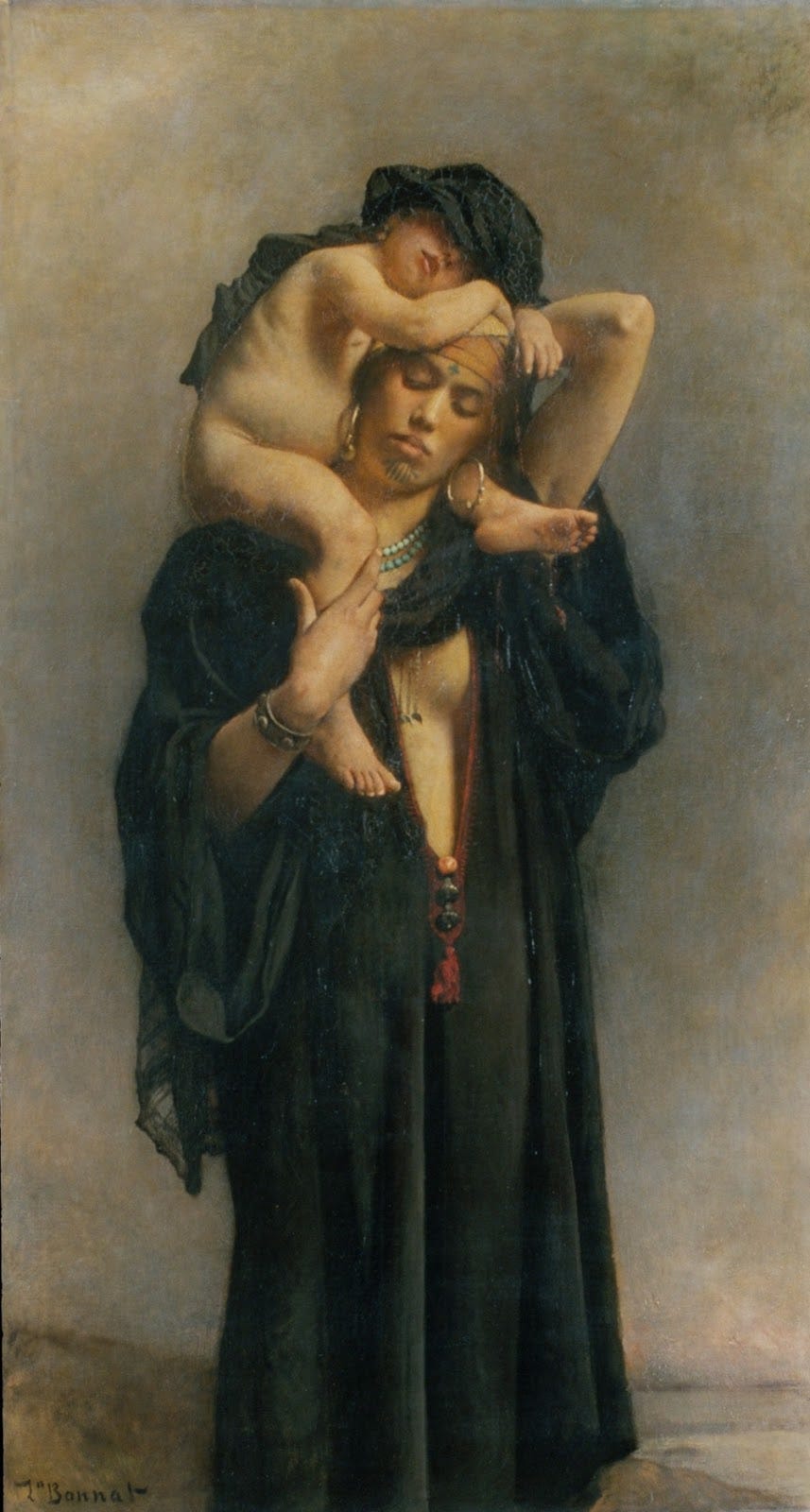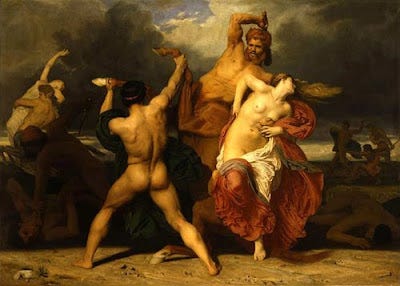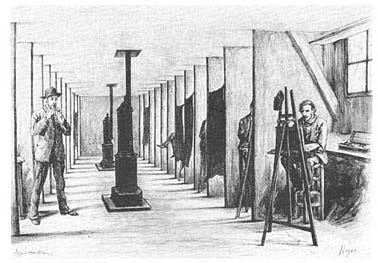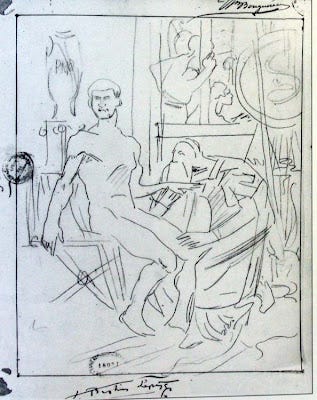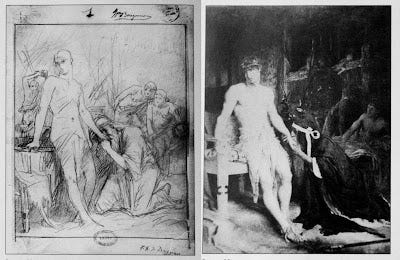Drawing plaster casts and nude models from observation was only a part of the French academic art curriculum in the 19th century.
Leon Bonnat, Egyptian Woman and Child, 1869-70
The ultimate goal for most students, and the surest way to fame, was to win the Prix de Rome competition. If you won this contest, you were sent to Rome at government expense to study the old masters.
But winning it required a combination of memory and imagination.
To enter the Prix de Rome competition, you had to qualify by winning the concours d’esquisse, where students composed a painted sketch based on a theme provided by the professors. If you made it this far, you had already been sifted out of a large bunch of aspirants.
En Loge Competition
Then you went on to a captive sketch competition called the the concours de dessin, or ‘en loges,’ (the loge was an area of cubicles, illustrated above.)
The finalists were ranked and then sequestered into the little stalls. They were all assigned the same surprise theme, usually from Greek or Roman history, mythology, or the Bible.
They were given twelve hours to complete an outline drawing. They could not leave their cubicles, nor could they talk to anyone. (I assume they were given some bread, water, and a chamber pot.)
In 1876, the assignment was a scene from the Iliad: “Priam pleading for the body of his son Hector from Achilles.” The drawing below was submitted by Jules Bastien-Lepage.
When they finished the session, the professor signed and stamped their entry. The supervising professor in 1876 was W.A. Bouguereau, who won the contest himself with "Zenobia Discovered by Shepherds on the Banks of the Araxes" (below) in 1850.
Then the students each were given 72 days to complete their paintings, using the full benefit of models, costumes, and props. But they could not deviate in any significant way from their sketches.
The paintings were then publicly exhibited and received the full scrutiny of critics, fellow students, professors, and the public. Joseph Wencker was criticized for changing the pose of the head of Achilles, but he won anyway.
Dagnan-Bouveret took second place.
What skills did this competition encourage?
Keep reading with a 7-day free trial
Subscribe to Paint Here to keep reading this post and get 7 days of free access to the full post archives.





